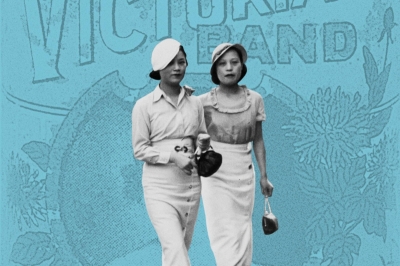The Spring/Summer 2005 Tokyo Collections -- the autumnal tranche of the biannual extravaganza of fashion shows presented by the Council of Fashion Designers, Tokyo, along with their vernal offering in April -- has just wound up giving the press and buyers a preview of what more than 30 Tokyo-based designers have in store for next year.
Trends on the runway this time included lots of eye-catching floral prints, abbreviated jackets, asymmetrical skirts and dresses and sexy off-the-shoulder tops. For accessories, chunky jewelry is in, and rhinestones and diamante crystals sparkle whatever the time of day.
Only one foreign designer -- Seoul-based Choi Chang Ho -- was showing this time, and menswear was restricted to just a handful of houses, with the collections from the eponymous Koshin Satoh, Ato Matsumoto (ato), Kenji Ito (Comme ca Collection) and Gentaro Noda (Iliad) providing to be the highlights.
If "supercasual" is one of the adjectives that can be applied to current street fashions, the message from the designers is that, with a little effort -- and a lot of money -- you can dress stylishly -- and not end up projecting an image akin to that of a scarecrow.
Top Japanese designer Jun Ashida commented: "Japanese people know what is fashionable, and they know what they want to wear. Everything is available. What I think will happen is that Japanese people will learn to express their own individual and personal fashion statements more clearly, rather than simply follow the trends. This has already started, of course, and I think it will become more pronounced."
But all is not well, financially, at the high-end of the Japanese fashion world, as more and more youngsters -- each and every one a potential customer -- opt out of buying designer brands in favor of their own quirky tastes -- sometimes cutting edge, sometimes questionable.
Even if Japan's fabled "recession" and current consumer tastes (or lack of them) are regarded as a threat, several overseas labels have not been deterred from investing billions of yen to establish a stronger presence in this country.
In Asia, the Japanese market is seen as the most important money-spinner of all -- and designers come a-flocking.
Top foreign fashion houses, including household names like Louis Vuitton, Chanel, Christian Dior, Prada and Hermes, have sprinkled their multimillion-dollar edifices with seeming abandon around different parts of the capital.
While they reap image dividends -- and, they hope, handsome profits -- with their presence, there is no denying that these global giants have an enormous impact on the ability of young Japanese designers to survive.
But their presence here, Ashida says, is a good idea, "because Japanese can see and purchase all the brands and styles that they like without the inconvenience of having to travel overseas."
There's nothing like fashion to promote the concept of internationalization, and, in a mirror image, Paris has long been the European homebase for many Japanese createurs, from Ashida's chic Rue du Faubourg Saint-Honore outlet to Issey Miyake's and Masatomo Hashimoto's presence in historical Place des Vosges to Rei Kawakubo's and Yohji Yamamoto's outlets.
Japanese consumers have long had an affinity with European designer brands, but they have also faithfully stood by their homegrown labels -- even if some of these only survive a few seasons.
Indeed, it is increasingly apparent that many of today's younger consumers, with their often decidedly avant-garde tastes, are more likely to avoid top-brand European lines and zero in on some young and unknown designer selling from a backstreet boutique.
Tokyo and Osaka, like other cosmopolitan cities, see a considerable number of comings and goings.
This season, the talk among the fashion writers is of an imminent sayonara to Tokyo by Akiko Ogawa, the dynamic woman behind the very sexy "a Primary" label. A name on the show schedule since 2001, Ogawa is swapping the Tokyo runway for New York, where her creations will be shown under the Akiko Ogawa label.
Asked why she is forsaking the place she calls home, the typically upbeat Ogawa answered simply, "There is no other Japanese designer who shows in New York. The lifestyle and aspirations of women in New York are just my style!"
Some New York buyers have commented on the potential of the line, several select stores have ordered her Spring/Summer 2005 collection -- and Saks Fifth Avenue has proposed an exclusive sales contract for the first season.
Not bad for the designer's first feelers in the market there. But is the New York -- or American -- consumer ready for her?
"My collection is sexy and intelligent, but at the same time it is young, feminine and cute," Ogawa said. Just the right ingredients to make her foray into the U.S. market a success.
But if trends and declining profits are negative aspects, on the positive side is the fact that all the large department stores here devote considerable space to young up-and-coming designers. And, as noted Tokyo designer Jun Ashida commented, "Japanese people can, and do, wear designs that originate in different countries; fashion here has become completely globalized."


























With your current subscription plan you can comment on stories. However, before writing your first comment, please create a display name in the Profile section of your subscriber account page.